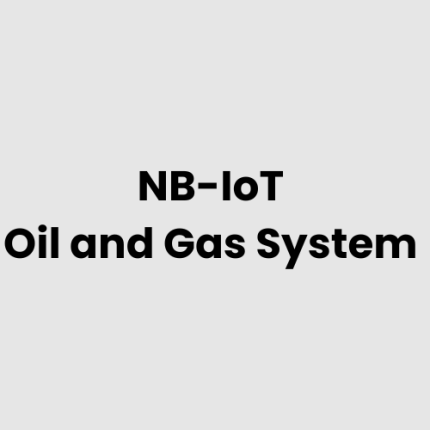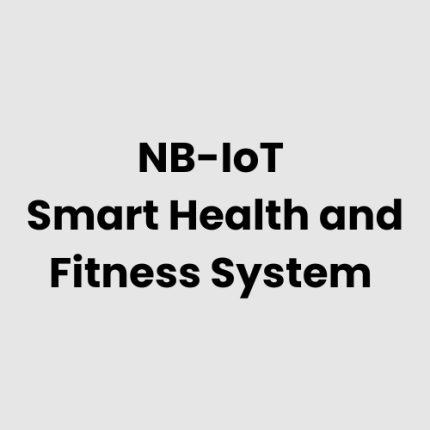Description
Technical Architecture of NB-IoT Enabled Smart Airports System
The NB-IoT Enabled Smart Airports System integrates multiple components designed to optimize airport operations and improve passenger experiences. The architecture typically includes:
- NB-IoT Sensors & Devices: These devices monitor various parameters, such as temperature, air quality, luggage tracking, and passenger movement.
- Gateways & Data Aggregators: These are used to collect data from IoT sensors and transmit it over the NB-IoT network to a central management system.
- Centralized Management System: A cloud-based or local server solution that processes data, manages device configurations, and integrates with existing airport management software.
- User Interface Dashboards: These provide real-time analytics and control, enabling airport staff to respond proactively to issues.
Hardware List of NB-IoT Enabled Smart Airports System
The system includes a variety of hardware components:
- NB-IoT sensors (temperature, humidity, motion, air quality)
- Smart beacons for asset tracking and passenger location
- IoT-enabled POS systems for ticketing and payments
- Gateways & Routers to ensure connectivity between sensors and the cloud/server
- Smart cameras integrated with IoT for surveillance and safety
- LED displays for flight information and passenger notifications
- Local servers (optional for installations requiring on-site data processing)
Physical Placement Considerations for NB-IoT Enabled Smart Airports System
The placement of hardware in the NB-IoT Enabled Smart Airports System must be carefully considered for optimal performance:
- Sensors should be placed in key areas like departure lounges, security zones, and baggage claim areas to monitor environmental conditions and track assets.
- Gateways & Routers should be distributed strategically across the airport to ensure full NB-IoT network coverage without signal interruptions.
- Cameras and Beacons need to be installed in high-traffic zones for effective surveillance and passenger tracking, such as security gates, corridors, and check-in counters.
- LED Displays should be placed in areas where passengers can easily see flight information, such as near gates and lounges.
Hardware Architecture of NB-IoT Enabled Smart Airports System
The NB-IoT Enabled Smart Airports System architecture consists of:
- End Devices/Sensors: These include environmental, security, and asset-tracking devices connected via NB-IoT technology.
- IoT Gateways: These serve as intermediaries that collect data from sensors and transmit it through the NB-IoT network to the cloud or local servers.
- Connectivity: NB-IoT ensures low-power, wide-area connectivity, which is ideal for extensive coverage across large airport terminals.
- Data Processing Unit: The central system, either cloud-based or hosted on a local server, processes and stores the incoming data.
- User Interface: Dashboards and control centers that allow airport management staff to visualize and act upon real-time data insights.
Deployment Considerations for NB-IoT Enabled Smart Airports System
When deploying the NB-IoT Enabled Smart Airports System, the following considerations are essential:
- Network Coverage: Ensure adequate NB-IoT signal coverage across the entire airport, especially in remote or high-demand areas.
- Integration with Existing Systems: The system must seamlessly integrate with existing airport infrastructure, such as passenger management, security, and baggage handling systems.
- Scalability: The system should be scalable to accommodate future growth in passenger numbers, devices, and services.
- Data Security: With sensitive information being transmitted, the system must comply with security protocols to protect data privacy and ensure safe operations.
- Maintenance: Hardware should be easily accessible for regular maintenance and upgrades to keep the system performing optimally.
List of Relevant Industry Standards and Regulations
- ISO/IEC 27001 – Information Security Management Systems (ISMS)
- ISO/IEC 29151 – Privacy Management
- GDPR – General Data Protection Regulation (for data privacy)
- IEC 61000 – Electromagnetic Compatibility (EMC)
- IEEE 802.15.4 – Low Rate Wireless Personal Area Networks (LR-WPANs)
- ISO 9001 – Quality Management Systems
- UL 294 – Access Control Systems
- ETSI EN 300 220 – Short Range Devices (SRD) Radio Frequency Standards for NB-IoT
Local Server Version of NB-IoT Enabled Smart Airports System
For airports with specific requirements for local data processing or limited cloud connectivity, a local server version of the NB-IoT Enabled Smart Airports System is available. This system allows all data from IoT sensors to be processed and stored on-site. Key benefits of this approach include:
- Reduced dependency on internet connectivity
- Faster data processing for time-sensitive applications (e.g., security)
- Full control over local data storage and processing
- Compliance with specific regulatory requirements regarding data sovereignty
Cloud Integration and Data Management
The NB-IoT Enabled Smart Airports System integrates seamlessly with cloud-based platforms for real-time data analysis and management. Key features of the cloud integration include:
- Real-time Data Analytics: The system continuously collects and processes data from sensors, cameras, and beacons, allowing airport management to monitor operational conditions and optimize resource allocation.
- Centralized Management: All devices can be managed and configured remotely via the cloud platform, ensuring that software updates and configuration changes are applied across the entire network.
- Scalability and Flexibility: Cloud-based storage and processing ensure that the system can scale with the growing needs of the airport, from passenger tracking to predictive maintenance.
- Data Visualization: Cloud dashboards offer intuitive visualization tools that help airport personnel make informed decisions quickly, improving operational efficiency and enhancing passenger satisfaction.
GAO Case Studies of NB-IoT Enabled Smart Airports System
USA Case Studies
- New York City, NY
At one of the largest airports in New York City, the NB-IoT Enabled Smart Airports System optimized security operations by integrating real-time surveillance data from IoT-enabled cameras and sensors. The system enabled automated monitoring of passenger flows and luggage tracking, enhancing security measures while improving the passenger experience. Learn more about IoT in aviation. - Los Angeles, CA
In Los Angeles, the deployment of NB-IoT sensors in a major airport terminal improved environmental monitoring. The system continuously tracked air quality, temperature, and humidity to ensure a comfortable environment for passengers. The seamless integration of IoT technology with existing airport infrastructure reduced operational costs and minimized human error. Read more about airport IoT solutions. - Chicago, IL
Chicago’s airport leveraged the NB-IoT Enabled Smart Airports System for predictive maintenance of baggage handling equipment. By monitoring the operational health of critical systems in real-time, airport personnel were able to predict failures before they occurred, significantly reducing downtime and maintenance costs. See how IoT aids airport operations. - Miami, FL
At Miami International Airport, the NB-IoT Enabled Smart Airports System was deployed to manage and track passenger luggage throughout the airport. With IoT-enabled asset tracking beacons, the system provided real-time updates on luggage location, reducing the chances of lost baggage and enhancing operational efficiency. Explore IoT solutions for baggage handling. - Dallas, TX
The NB-IoT Enabled Smart Airports System was utilized in Dallas/Fort Worth International Airport to streamline airport traffic management. Using real-time data from NB-IoT sensors, the system optimized the flow of passengers and reduced congestion in high-traffic areas, improving the overall passenger experience. Read more on smart traffic management. - San Francisco, CA
San Francisco’s airport implemented the NB-IoT Enabled Smart Airports System to monitor air quality in various terminals. The system’s sensors continuously detected pollutants and provided alerts to control room operators, ensuring a healthier environment for both staff and travelers. Discover air quality monitoring in airports. - Seattle, WA
At Seattle-Tacoma International Airport, the NB-IoT Enabled Smart Airports System helped reduce energy consumption by monitoring the lighting and temperature systems. With data-driven insights, the airport was able to optimize energy use, resulting in significant savings and a greener environment. Learn more about energy management in airports. - Atlanta, GA
In Atlanta, the NB-IoT Enabled Smart Airports System was integrated to track real-time weather conditions both inside and around the airport. This enabled better decision-making for airport authorities, from adjusting heating and cooling systems to preparing for inclement weather and minimizing disruptions. Find out about smart weather monitoring. - Washington, D.C.
Washington Dulles International Airport used the NB-IoT Enabled Smart Airports System for efficient crowd control and to improve security. The system used IoT sensors to analyze passenger movement patterns and provided real-time data for security personnel, ensuring smooth operations and better crowd management. Learn about IoT in airport security. - Denver, CO
In Denver, the NB-IoT Enabled Smart Airports System was deployed to streamline boarding processes. By integrating IoT sensors with boarding pass scanners, the airport reduced waiting times and improved the overall passenger experience. The system also provided real-time passenger flow data to enhance scheduling accuracy. See how IoT improves airport operations. - Boston, MA
At Boston Logan International Airport, the NB-IoT Enabled Smart Airports System monitored baggage sorting systems. Real-time tracking of baggage movement allowed for faster identification of delays and automatic rerouting, reducing the number of mishandled bags and increasing operational efficiency. Read about baggage handling innovation. - Orlando, FL
The NB-IoT Enabled Smart Airports System at Orlando International Airport facilitated smart parking management. The system used NB-IoT-enabled sensors to provide real-time updates on available parking spaces, improving customer satisfaction and easing congestion during peak hours. Learn about smart parking systems. - Phoenix, AZ
Phoenix Sky Harbor International Airport implemented the NB-IoT Enabled Smart Airports System to monitor public Wi-Fi usage across terminals. By analyzing the data, the airport was able to optimize bandwidth allocation and improve connectivity for passengers, ensuring smooth internet access during peak travel times. Explore IoT-enabled airport connectivity. - Las Vegas, NV
The NB-IoT Enabled Smart Airports System at Las Vegas McCarran International Airport helped manage the influx of passengers during peak travel seasons. IoT sensors monitored crowd density in check-in lines, providing real-time data to adjust staffing levels and ensure a smoother flow of passengers. Read more about IoT in passenger management. - Houston, TX
Houston George Bush Intercontinental Airport utilized the NB-IoT Enabled Smart Airports System to integrate with its airport-wide security systems. By collecting data from security cameras and sensors, the system improved threat detection and responded to incidents with greater speed and precision, contributing to safer airport operations. Learn more about smart airport security.
Canada
- Toronto, ON
At Toronto Pearson International Airport, the NB-IoT Enabled Smart Airports System was installed to monitor environmental conditions across multiple terminals. The system integrated with HVAC units to automatically adjust temperatures based on real-time data, enhancing comfort while reducing energy consumption. Discover IoT in airport management. - Vancouver, BC
The NB-IoT Enabled Smart Airports System in Vancouver International Airport (YVR) was deployed to improve baggage tracking and reduce the incidence of lost luggage. IoT sensors embedded in luggage carts allowed real-time updates for passengers, providing greater peace of mind and improving operational efficiency for ground staff. Find out about YVR’s innovative solutions.
Navigation Menu for NB-IoT
Navigation Menu for IoT
- LORAWAN
- Wi-Fi HaLow
- Z-WAVE
- BLE & RFID
- NB-IOT
- CELLULAR IOT
- GPS IOT
- IOT SENSORS
- EDGE COMPUTING
- IOT SYSTEMS
Our products are in stock and can be shipped anywhere in the continental U.S. or Canada from our local warehouse. For any further information, please fill out this form or email us.
We are actively looking for partners who are like us located in the U.S. and Canada. For more information on partnering with GAO, please visit Partner with GAO Tek Inc. It lists various ways to partner with GAO, such as OEM Partnerships, Technology Integration, Distribution and Reselling Opportunities, Presenting at the Leading Event Tek Summit, Joint R&D Projects, Training and Consulting Services, Industry-Specific Collaborations, Research and Academic Partnerships.



